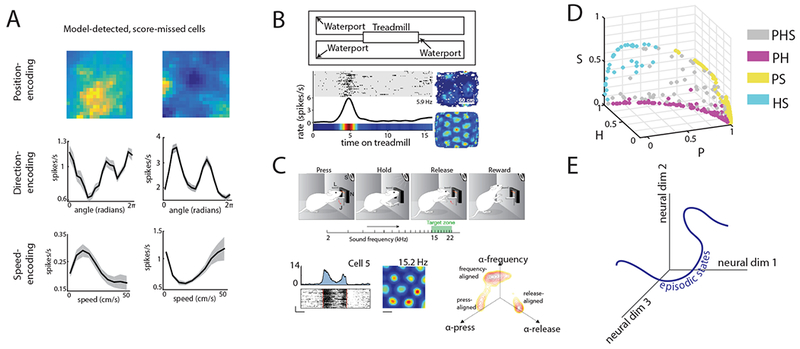Figure 3.

Entorhinal neurons represent multiple task variables in heterogeneous ways. A. Cells with low grid, border, head direction, and speed score that were detected as encoding position (top), head direction (middle), or speed (bottom) by a model-based method. [Reproduced from Hardcastle et al., 201716]. B. Schematic of task used in Kraus et al., 201570 and example results. In this task, animals ran in place on a treadmill that varied in speed and running duration (top). A subset of grid cells encodes time on the treadmill, in addition to location in 2-dimensional space (bottom) [Reproduced with permission from Kraus et al., 201570]. C. Schematic of an auditory frequency task, in which rats pressed a bar to play sequentially higher auditory frequencies, releasing the bar when a learned frequency was played. A subset of grid cells, as assessed in a 2-dimensional environment, responded to the initial press, the release, or a given frequency (example in bottom left). When plotted in a space defined by linear model coefficients that capture tuning to frequency, lever pressing, or lever releasing, MEC neurons cluster along these three axes (bottom right) [Reproduced with permission from Aronov et al., 201772]. D. MEC neurons detected as encoding combinations of position (P), head direction (H), and speed (S) plotted in a variable-contribution space. This space represents the normalized contribution of each variable to spike prediction, which is computed from differences in the performance of models of varying complexity. In this space, MEC neurons lack significant clustering. [Reproduced from Hardcastle et al. 201716]. E. Schematic of the episodic state hypothesis. The axes denote a dimensionality-reduced space in which neural data is projected onto, while the blue line illustrates the potential trajectory of population-level neural data in this space during a behavioral task.
